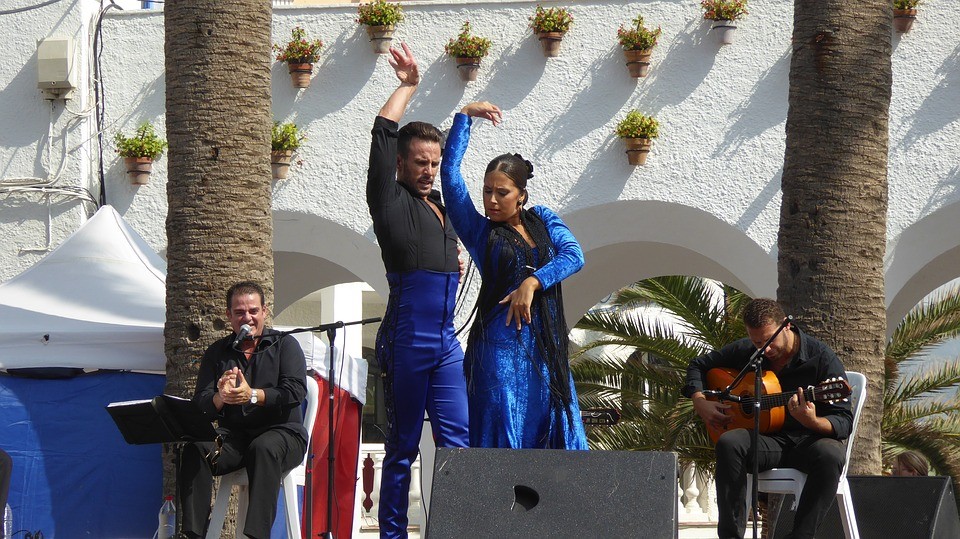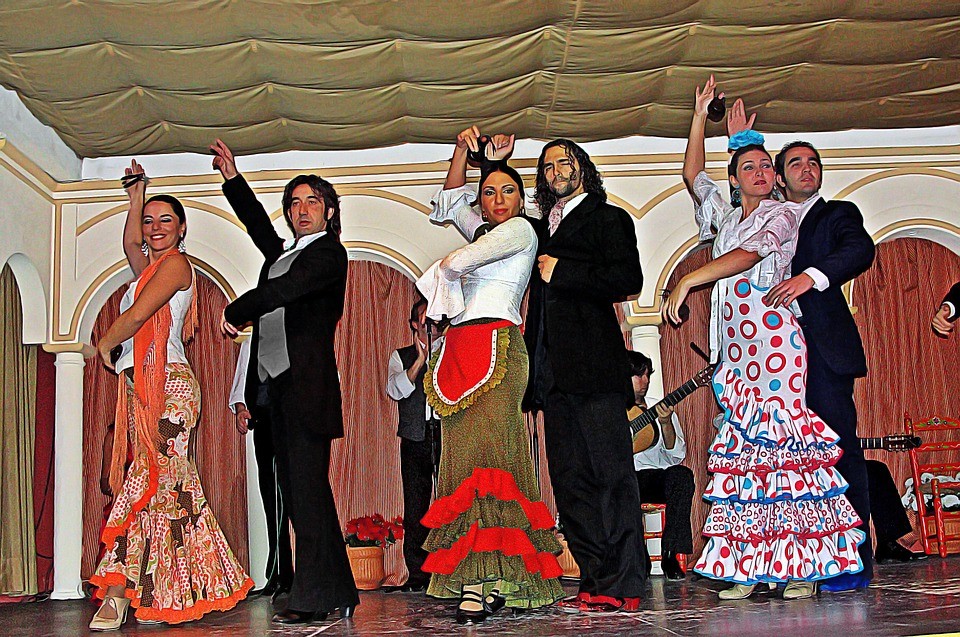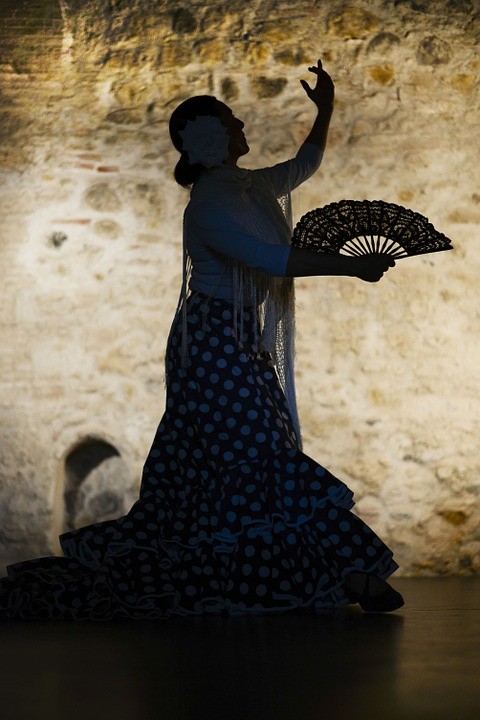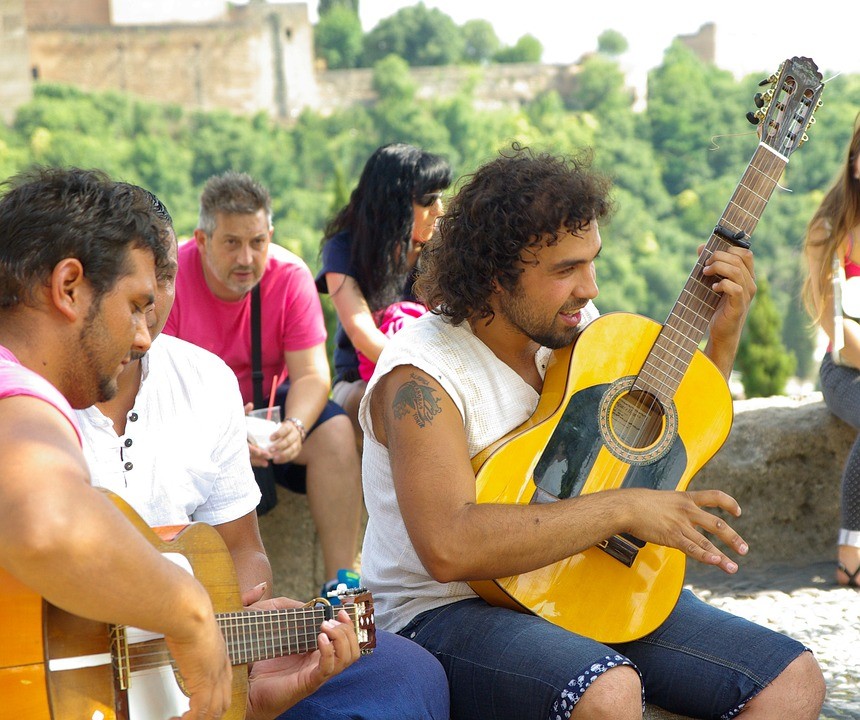Spanish Music: Flamenco
Hello! This time I want to talk to you about a really important component of Spanish culture: its music.
Since time immemorial music has been one of the greatest forms of expression for people, and throughout history has represented a sign of identity for different cultures.
When we get to know a country or a culture, one of the aspects that we bear in mind is its music. For this reason I'm going to talk about Spanish music, and in particular, one of the styles that indicate one of the greatest signs of identity of our country abroad: flamenco.

This music genre is mainly associated with one of our country's autonomous communities, Andalusia, although also with Murcia and Extremadura, and it's true that nowadays it's much more widespread.
The origin of Flamenco is not entirely clear, although more significant theories date its apparition as we know it today to the XVIII century. Surely, this creation was the result of various cultures that lived together in Andalusia, and not only of gypsy origin, with which it is usually associated. In fact, it is said that the Moors have a lot to do with the origins of flamenco, although other groups could have had a key role to play in this cultural phenomena, with flamenco being the result of the union of Castilians, Muslims, Jews, Natives and Gypsies.

Nowadays, flamenco is much more widespread and there are academies of this style of dance spread around the world and on various continents, as it is one of the elements of Spanish tradition that cause a furore in certain cultures.
Flamenco can express very different emotions that can range from happiness to tragedy, and it is interpreted in different celebrations that can even be religious.
Now that we know a little of the history and origin of this musical genre, we realise the importance that it has in our heritage. There are so many aspects that those of us who aren't experts in this field don't know, but flamenco is a genre of great complexity and of which one could write a lot more. As I've said, I'm not an expert in this type of music and I'll just explain a few facts and figures that I know.
The importance of flamenco in our country is a fact, and if you had any doubt, did you know that Unesco declared it Intangible Cultural Heritage of Humanity 18 years ago, that is, in 2010. Different criteria were taken into account to demonstrate the importance of this artistic expression in our country's heritage.

Flamenco is a really complicated genre that makes up the singing, in other words, the artist's voice, either man or woman, but also the dancing and the musical accompaniment, which above all is the tapping of the guitar, with some rules and some of its own characteristics. It can also be accompanied by other instruments like the castanets, and typically with heels and palms.
Frequently, the person singing flamenco is called the 'cantaor', and, although it's not a common word, the people who play the guitar within this musical genre are called 'tocaores'.
The flamenco 'tocaores' have a style of playing which is very singular and characteristic, differentiating themselves from other artists who play the same instrument within different musical genres. The guitar used in this case is usually the classic guitar, although a specific instrument exists as well called the flamenco guitar. This guitar is very similar to the classic one, but its design is a bit different, also causing some differences in sound from one to the other.

Like I've said, flamenco is overly complex and within it we find distinct types with different techniques and characteristics. These distinct types are known as palos, and are very numerous, although maybe some of the more known are 'bulerías', fandangos, saetas, rumbas, tangos or sevillanas. These are only a few examples of the many we can find depending on different origins and traditions.
As an interesting fact, this music, and especially the dance related to it, are currently studied and developed as a method known as flamenco therapy. Dance, psychology and gymnastics come together in this therapy, which has been shown to cause physical and psychological benefits, helping some people to overcome problems of depression and stress, and even physical health problems by reducing pain and strengthening some parts of the body.
Photo gallery
Content available in other languages
- Español: Música española: El flamenco
Want to have your own Erasmus blog?
If you are experiencing living abroad, you're an avid traveller or want to promote the city where you live... create your own blog and share your adventures!
I want to create my Erasmus blog! →







Comments (0 comments)